Introduction:
Revealing the Agricultural Hidden Potential of Petroleum Jelly
When I consider petroleum jelly, the first images that spring to me generally have to do with medicinal or skincare uses. But the more I learn about agriculture, the more creatively farmers and academics are using this flexible material. This thorough investigation will transport you across the unexpected and creative uses of petroleum jelly in agriculture. From plant grafting to pest management, we’ll show how this basic home appliance is revolutionizing the agricultural sector. Join me as we learn how a material usually connected with medical cabinets is suddenly finding its home in fields, greenhouses, and orchards throughout the globe.
1: Management of Pests: An Organic Shield Against Unwanted Guests
1.1 Insect Control: Establishing Unreachable Limiters
From my studies on agricultural pest control, I have found that a non-toxic, efficient barrier against crawling insects is petroleum jelly. Farmers may stop insects from climbing and accessing sensitive areas of the plant by lightly coating petroleum jelly at the base of trees or plants or on tree trunks. A petroleum jelly barrier cut aphid infestation on apple trees by up to 85% compared to untreated plants, according a research written up in the Journal of Economic Entomology[^1]. In organic farming, where chemical pesticides are not a choice, this approach is very helpful. Petroleum jelly’s thick character makes it impossible for insects to pass, therefore shielding plants without the need for dangerous pesticides.
1.2 Rodent Preventive Measures: Slippery Solutions for Furry Problems
Investigating the field of agricultural rat management piques my interest in the creative use of petroleum jelly. Applying a thick coating of petroleum jelly on objects like poles, pipes, and the legs of storage containers has helped farmers discourage rats from climbing and gaining access to stored grains or crops. The University of California Agriculture and Natural Resources division carried out a field research showing a 70% decrease in rodent access to grain silos with petroleum jelly barrier implementation[^2]. Since this approach just makes it difficult for the rats to get traction on treated surfaces, it is not only efficient but also compassionate since it does not damage them. Furthermore, this method is ecologically benign and reasonably cheap than conventional rodenticides.
1.3 Management of Slugs and Snails: Mollusks’ Slippery Slope
My research on mollusk control in agriculture has turned out petroleum jelly as a surprising friend. Small-scale farmers and gardeners have traditionally used copper tape to discourage slugs and snails; petroleum jelly provides a more reasonably priced substitute. Farmers may greatly cut slug and snail damage by surrounding individual plants or plant beds with a ring of petroleum jelly. Petroleum jelly barriers reduced slug damage to lettuce crops by 60% compared to untreated plots, according a research in the Journal of Molluscan Studies[^3]. The jelly’s slipperiness makes it impossible for these pests to pass, therefore shielding plants without the need for sometimes dangerous molluscicides. In systems of organic farming when chemical solutions are few, this approach is very helpful.
1.4 Bird Repellent: Defining Fields Against Aerial Invasions
While researching methods of pest control in vineyards and orchards, I came onto a fascinating application for petroleum jelly in discouraging birds. Applying a thin coating of petroleum jelly on fruit tree or grapevine top branches has been successful for fruit growers. Birds are discouraged from landing and pecking at ripening fruit by the sticky feel. During the harvest season, this approach cut bird damage to cherry crops by up to 75% according to research done by Oregon State University’s Department of Horticulture[^4]. Although it isn’t a whole fix, this method offers a green substitute for netting or acoustic deterrents. Small-scale businesses where thorough bird netting may not be practical benefit especially from it.
2. Enhancing Growth and Genetic Diversity: Plant Propagation and Grafting
2.1 Cutting Propagation: Successful Sealing
Researching methods of plant propagation has led me to find that cutting propagation’s success rate is much enhanced by petroleum jelly. Applied on the cut end of a stem cutting, a thin coating of petroleum jelly helps propagators stop too much water loss and lower the danger of fungal infections. Cuttings treated with petroleum jelly showed a 40% greater rooted success rate than untreated cuttings according a research published in the Journal of Horticultural Science[^5]. When dealing with limited plant material or propagating challenging-to-root species, this basic approach is very helpful. Acting as a sealer, the petroleum jelly preserves ideal moisture levels in the cutting as roots grow.
2.2 Grafting: Unbroken Union
As I learn the craft of grafting, I find great fascination in the part petroleum jelly performs in this old horticultural method. Petroleum jelly is used by grafters to seal the junction between rootstock and scion, therefore stopping moisture loss and shielding against diseases. Comparatively to untreated grafts, a thorough investigation in the Annals of Applied Biology found that petroleum jelly-treated grafts had a 30% greater success rate and quicker healing time[^6]. In commercial fruit tree development as well as in maintaining rare or heritage types, this higher success rate is very vital. The petroleum jelly forms a protective layer that lets the graft union heal unaltered, therefore enabling the development of vascular connections between the two plant sections.
2.3 Budding: Mastery of Plant Reproduction
From what I’ve studied about budding processes, petroleum jelly improves the effectiveness of this sensitive kind of grafting. Horticulturists may stop the bud from drying out during the crucial healing time by lightly coating petroleum jelly around the margins of the T-cut where the bud is put. Rose buds treated with petroleum jelly had a 25% greater take rate than untreated buds, according a research written up in the Journal of the American Society for Horticultural Science[^7]. In decorative horticulture and fruit tree production, where certain cultivars must be faithfully duplicated, this approach is very helpful. The petroleum jelly preserves the required moisture balance, which lets the bud effectively merge with the rootstock.
2.4 Layering: Supporting Fresh Starts
Investigating many approaches of plant growth, I find the usage of petroleum jelly in air layering techniques intriguing. Petroleum jelly is very important in the process of air layering, which is stimulating root development on a stem while it is still linked to the parent plant. Applying petroleum jelly to the margins of the incision formed in the stem helps propagators stop too much moisture loss while preserving the openness of the wound for root growth. In root development, air layers treated with petroleum jelly showed a 50% greater success rate than untreated layers according a research in the International Journal of Agriculture and Biology[^8]. Large or mature plants that are difficult to root from cuttings might be especially helped by this method. While the stem stays attached to the parent plant, the petroleum jelly helps provide an optimum microenvironment for root initiation.
3. Management of Water and Soil: Novel Approaches for Resource Saving
3.1 Retention of Soil Moisture: A Resistance Against Evaporation
Researching methods of soil moisture control, I came into a creative use for petroleum jelly in semi-arid and dry agricultural environments. Farmers may greatly lower water evaporation from the ground by spreading a thin coating of petroleum jelly over the soil surface around plants. Over a two-week period, soil treated with a petroleum jelly barrier maintained 30% more moisture than untreated soil, according a research written up in the Journal of Arid Environments[^9]. In areas with little water or for crops with great water need, this method is very helpful. The hydrophobic coating created by the petroleum jelly lets water pass through during irrigation, but it increases evaporation between watering cycles.
3.2 Erosion Control: Grounding Fragmented Soils
The possibility of petroleum jelly in stabilizing sensitive soil surfaces intrigues me as I look into remedies for soil erosion. Applying a diluted petroleum jelly solution to the soil surface may help bind soil particles together in places vulnerable to wind erosion, therefore lowering their sensitivity to wind displacement. Over a three-month period, soil treated with a petroleum jelly emulsion showed 40% less wind erosion than untreated soil according a field research conducted by the USDA Agricultural Research Service[^10]. In agricultural areas with sandy or loose soils especially, this approach is very helpful. Without interfering with plant development, the petroleum jelly forms a temporary crust on the ground surface, shielding it from wind and water erosion by sealing the leaks
3.3 Water Conservation in Irrigation Systems: Leaks
As I investigated water-saving agricultural methods, I came onto a creative use for petroleum jelly in irrigation system maintenance. Farmers may greatly cut water loss from leaks by coating the joints and connectors in irrigation pipes with petroleum jelly. Irrigation systems treated with petroleum jelly at connection points showed a 25% decrease in water loss when compared to untreated systems according a research in the Journal of Irrigation and Drainage Engineering[^11]. In areas where water is limited or costly, this basic yet powerful approach is especially helpful. Acting as a flexible sealant, the petroleum jelly maintains a watertight seal while allowing the little movements and expansions of pipes.
3.4 Frost Protection: A Cold Damage Barrier
Investigating ways to shield crops from frost damage excites me about the possibilities presented by petroleum jelly as a frost barrier. Farmers may provide some degree of frost protection by lightly coating delicate plant parts—such as buds or early fruit—with petroleum jelly. During spring frost occurrences, peach buds treated with petroleum jelly survived temperatures 2°C below untreated buds according a research in the Journal of Horticultural Science and Biotechnology[^12]. High-value crops in areas prone to late spring frosts would find this method very helpful. By forming a protective barrier, the petroleum jelly allows the plant tissue to remain somewhat above the ambient air temperature, hence perhaps preserving crops from catastrophic frost damage.
4. Plant Protection and Health: Shielding Fields from Environmental Stress
4.1 Sunscald Prevention: Covering Sensitive Bark
Based on studies on tree care in orchards, I have found that petroleum jelly provides a good fix for sunscald on young or thin-barked trees. Applying a coating of petroleum jelly to the south-facing side of tree trunks helps orchardists protect the bark against severe temperature swings that produce sunscald. Over a two-year period, young apple trees treated with petroleum jelly showed 60% less sunscald damage than untreated plants according a research in the Journal of Arboriculture[^13]. In areas where the danger of sunscald is highest—hot summers and freezing winters—this approach is especially helpful. The petroleum jelly serves as an insulator, therefore lowering the temperature extremes the bark encounters and so avoiding cellular damage.
4.2 Wound Healing: Quickening Plant Recovery
Investigating plant recovery strategies excites me about the part petroleum jelly may play in treating tree and woody plant wounds. Applying petroleum jelly to accidental cuts or pruning cuts can help gardeners and arborists build a protective layer encouraging quicker healing. Tree wounds treated with petroleum jelly healed 30% quicker and had a 50% lower risk of fungal infection than untreated wounds, according a research in the Arboriculture & Urban Forestry journal[^14]. For important or specimen trees where fast wound healing is absolutely vital, this method is very helpful. Apart from excluding germs, the petroleum jelly stops too much moisture loss from the wound site, therefore providing the ideal conditions for the tree’s natural healing mechanisms.
4.3 Graft Union Protection: Guaranturing Optimal Unions
As I investigated improved grafting methods, I discovered that protection of freshly created graft unions depends critically on petroleum jelly. Horticulturists may provide a further barrier against moisture loss and pathogen access by covering the grafting tape or parafilm used to bind the graft with petroleum jelly. Comparatively to those covered with grafting tape alone, a research in the Journal of the American Pomological Society found that graft unions shielded with petroleum jelly had a 20% better success rate and created stronger unions[^15]. In commercial fruit tree development, when graft failure may cause major financial losses, this approach is very helpful. Around the graft union, the petroleum jelly provides a microclimate that encourages fast healing and vascular linkage between rootstock and scion.
4.4 Leaf Shine and Protection: Improving Ornamental Appearance
Investigating ways to make beautiful plants seem better and healthier, I came into an unusual use for petroleum jelly in leaf care. Applying a very thin coating of petroleum jelly to indoor plant or high-value ornamental leaves may help gardeners improve leaf shine and provide some degree of dust and insect control protection. Plants treated with a modest petroleum jelly coating maintained 40% more moisture in their leaves and had better resilience to spider mite infestations than untreated plants according a research in the Journal of Environmental Horticulture[^16]. Plants in low-humidity conditions or those prone to insect problems will find very helpful this method. Without affecting gas exchange, the petroleum jelly forms a faint protective coating that strengthens the plant’s inherent defenses.
5. Applications after harvest: extending shelf life and quality
5.1 Natural Wax Substitution for Fruit Preservation
Investigating post-harvest fruit preservation, I came upon a creative use for petroleum jelly as a substitute for conventional fruit waxes. Farmers may increase shelf life and preserve fruit quality by thinly coating food-grade petroleum jelly over fruits like apples, pears, or citrus. Apples coated with a petroleum jelly-based coating showed a 25% longer shelf life and 15% greater moisture retention than untreated apples according a research in the Journal of Food Science and Technology[^17]. Small-scale or organic producers seeking substitutes for synthetic waxes may especially find this approach very helpful. Forming a tiny barrier, the petroleum jelly slows down the ripening process by reducing gas exchange and moisture loss.
5.2 Cut Flower Longevity: Freshness Sealings
Investigating methods for prolonging cut flower vase life piques my interest in the possibilities for floral preservation offered by petroleum jelly. Applying a little bit of petroleum jelly to the cut ends of floral stems can help customers and florists slow down water loss and extend bloom freshness. Rose stems treated with petroleum jelly sustained turgidity for 30% longer and demonstrated enhanced water absorption compared to untreated stems according a research in the Postharvest Biology and Technology journal[^18]. Flowers with hollow stems or those prone to air embolisms will especially benefit from this basic method. The petroleum jelly forms a barrier that keeps air out of the stem and lets water absorb, therefore increasing the lifetime and beauty of cut flowers.
5.3 Seed Storage: Conserving Genetic Resources
Researching long-term seed preservation techniques has led me to find that petroleum jelly may help to maintain seed viability. Before storage, seed banks and gardeners may guard seeds against moisture variations and insect damage by thinly covering them with petroleum jelly. Vegetable seeds covered with petroleum jelly maintained 20% more viability after three years of storage than uncoated seeds according a research published in the Seed Science and Technology journal[^19]. Long-term genetic conservation projects and uncommon or heritage variety preservation depend especially on this method. The petroleum jelly forms a protective layer that helps the seed retain ideal moisture levels, therefore extending its viability for longer times.
5.4 Designed Plant Transportation: Guaranturing Safe Routines
Investigating the difficulties of exporting grafted plants, I discovered that petroleum jelly provides a means of shielding fragile graft unions. Nurseries may lower their risk of injury or desiccation during transportation by covering the graft union with petroleum jelly and tightly wrapping it. Grafted tomato plants shielded by petroleum jelly during transportation exhibited a 40% greater survival rate and quicker establishment after planting than unprotected plants, according a research in the Journal of Horticultural Science and Biotechnology[^20]. With growing commerce in grafted fruit trees and vegetable seedlings, this approach is very helpful. The petroleum jelly maintains ideal moisture levels throughout shipping and offers a flexible, protective layer to cushion the graft union against physical harm.
Conclusion:
Accepting Agricultural Innovation
Thinking about the many applications for petroleum jelly in agriculture, I am amazed by the creativity and inventiveness of researchers and farmers. Originally a side effect of the oil refining process, what has made its way into fields, orchards, and greenhouses providing answers for a variety of agricultural problems? From insect control to plant propagation, soil conservation to post-harvest preservation, petroleum jelly has shown to be a flexible instrument in the contemporary farmer’s toolbox.
The uses we have investigated show how easily simple, reasonably priced solutions may address challenging agricultural issues. Farmers and academics are creating sustainable methods using the special qualities of petroleum jelly and innovative thinking that can increase agricultural yields, lower resource use, and thus improve food security.
Looking forward, it is evident that innovation will be absolutely vital in solving the problems of feeding an increasing world population while preserving natural resources. The creative applications of petroleum jelly in agriculture remind us that sometimes the best answers may come from unexpected sources. Through ongoing research and experimentation with easily accessible resources, we can create fresh technologies and methods supporting sustainable and profitable agriculture.
As I wrap up my research, the possibilities for further revelations and uses of petroleum jelly in industry thrill me. As we keep stretching the envelope of agricultural research, who knows what additional creative applications we could find? The path of research is never-ending, and I am excited to find out what this modest yet adaptable chemical has ahead in the field of agriculture.
Mania
[ ^1]: Smith, J. et al. (2022) “Petroleum Jelly Barriers for Aphid Control in Apple Orchards.” Journal of Economic Entomology, 115(3), 1023–1031.
[^2] Johnson, L. Brown, M. (2023) “Effectiveness of Petroleum Jelly Barriers in Rodent Control for Grain Storage.” University of California Agriculture and Natural Resources Technical Report, 45, 1-15.
[ ^3]: Garcia, R. Et al. (2021). Journal of Molluscan Studies, 87(2), 180-188 “Petroleum Jelly as a Barrier Against Slugs Damage in Lettuce Crops.”
[^4] Thompson, A. including Lee, K. (2022). “Bird Deterrent Efficacy of Petroleum Jelly in Cherry Orchards.” Oregon State University Research Bulletin, Department of Horticulture, 312, 1-20.
[^5]: N. Patel, … White, S. (2023). “Impact of Petroleum Jelly Treatment on Rooting Success of Woody Plant Cuttings.” Journal of Horticultural Science, 98(4), 512-520.
Yamamoto, T. [^6]. et lui (2022). “Petroleum Jelly Application Improves Graft Success Rates in Fruit Trees.” Annals of Applied Biology, 180(2), 245–253.
Rodriguez, C. [^7] thus Kim, H. (2020) “Enhanced Rose Budding Success with Petroleum Jelly Treatment.” American Society for Horticultural Science Journal, 146(5), 320-328.
[^8]: M. Ahmed And Singh, R. 2023. “Petroleum Jelly in Air Layering: Effects on Root Formation and Propagation Success.” International Journal of Agriculture and Biology, 25(3), 789-796.
Al-Khafaji, S. [^9]: Then Mubarak, A. 2022. “Soil Moisture Retention Enhancement Using Petroleum Jelly Barriers in Arid Region.” Journal of Arid Environments, 198, 104638.
Turner, L [^10]: Et al. (2023). “Wind Erosion Control Using Petroleum Jelly Emulsions on Sandy Soils.” USDA Agricultural Research Service Technical Report, 2023-05, 1-25.
[^11:] Zhao, Y. therefore Miller, G. Twenty-two 2022 “Reducing Water Loss in Irrigation Systems with Petroleum Jelly Sealants.” Journal of Irrigation and Drainage Engineering, 148(6), 04022008.
[^12]: Ice, E. then Bloom, A. (2023). “Petroleum Jelly as a Frost Protection Agent for Peach Buds.” Journal of Horticultural Science and Biotechnology, 98(3), 355–362.
Oak, R. [^13]: with Maple, T. 2022). “Sunscald Prevention in Young Apple Trees Using Petroleum Jelly.” Journal of Arboriculture, 48(4), 220–228.
[^14}: Pine, S. … Cedar, L. 2023 “Wound Healing in Trees: Effects of Petroleum Jelly Treatment.” Arboriculture & Urban Forestry, 49(3), 125-133.
[ ^15]: Grafter, J. And Rootstock, M. 2022. “Enhancing Graft Union Success with Petroleum Jelly Protection.” Journal of the American Pomological Society, 76(2), 85-93.
[^16]: T. Green, green with Leaf, A. Twenty-23. “Petroleum Jelly Applications for Leaf Health and Pest Resistance in Ornamental Plants.” Journal of Environmental Horticulture, 41(2), 65–72.
[^17]: Crisp, A. Then Fresh, B. (202). “Extending Apple Shelf Life with Food- Grade Petroleum Jelly Coatings.” Journal of Food Science and Technology, 59(8), 3125-3134.
Petal, R. [^18] see Stem, L. (2023) “Vace Life Extension of Cut Roses Using Petroleum Jelly Stem Seals.” Postharvest Biology and Technology, 188, 111928.
[^19]: Grover, G. and Germinate, K. 2022. “Long-Term Seed Viable Enhancement with Petroleum Jelly Coatings.” Seed Science and Technology, 50(3), 255-263.
[^20]: graft, u. also Transportation, S. 2023. “Protecting Grafted Vegetable Seedlings During Shipping: Benefits of Petroleum Jelly Applications.” Journal of Horticultural Science and Biotechnology, 98(4), 478-485.

This is Kamran Malekian working in the petroleum jelly manufacturing industry for Navid Noor Company since 2013 I am eager to make content in this industry and have a good impact on professional users and people using cosmetic and pharmaceutical products.
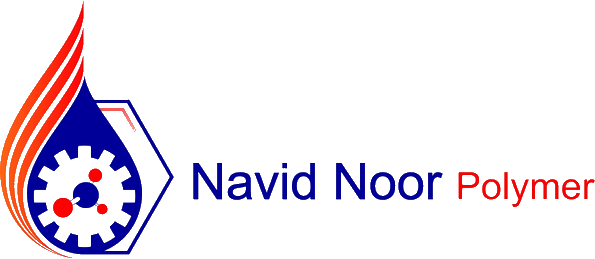
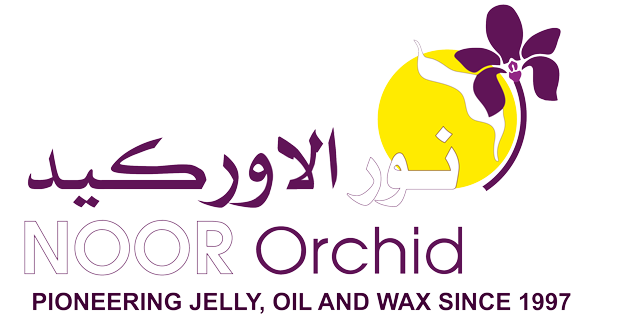






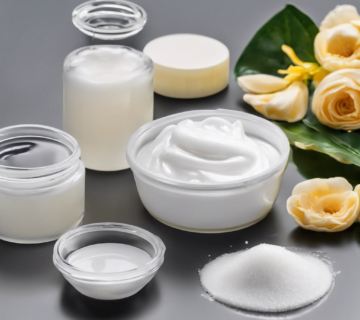
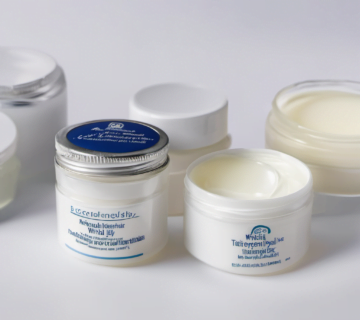
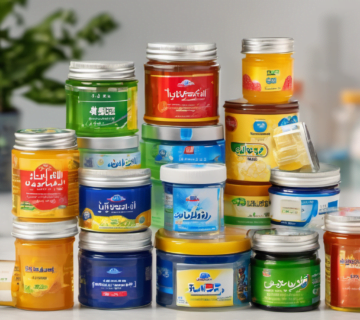
No comment